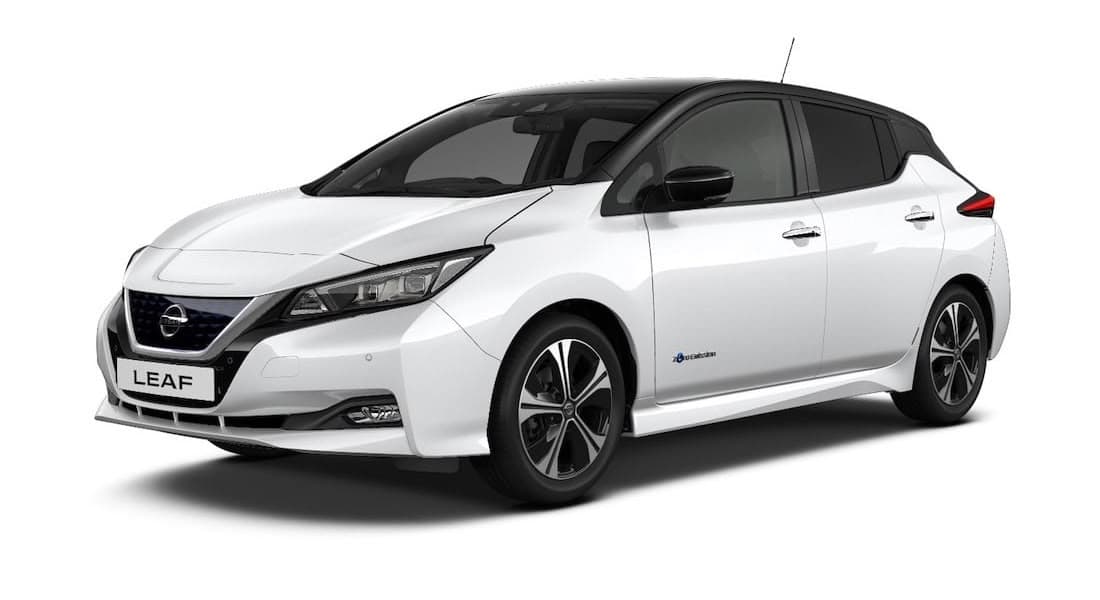Nissan Leaf

Variants
Note that the charging rate of Japanese import version is 3.3 kW (unless optional 6.6 kW charging was added at purchase in Japan).
From 2023 Nissan NZ identified the base Leaf as a 39 kWh battery (indicating its usable capacity rather than total).
Performance
Range & Efficiency
Battery & Charging
Dimensions & Weight
Storage & Towing
Guides
- A locally-written guide to the 40/62 kWh Leaf (PDF -- 2025).
- Comprehensive guide to the pre-2018 Leaf (external link).
- Nissan Leaf battery upgrade guide.
Battery State of Health and Range
Over time, older Leaf batteries lose their ability to hold their charge.
In older (pre-2018) Leafs, this degradation is around 2-3% per year. Newer Leafs (40 kWh) are not showing the same linear drop in health. Like other EVs, they tend to experience an inital drop of about 10-12% in the first 3-4 years, followed by a levelling and more gradual degradation.
It's important to limit charging to 75-80% whenever possible and only charge to 100% when necessary. This was confirmed by comprehensive lab testing of 24 Leaf batteries (from 2018+ models); frequent charging to 100% leads to considerably increased battery degradation.
Frustatingly, Nissan removed the ability to set this on the car (which you can do on 24 kWh Leafs). This requires some maths and monitoring when charging.
State of Health (SoH) is an important consideration when buying a Leaf (more so than km's traveled).
SoH cannot be read on a Nissan Leaf without using some extra kit; however, the dashboard displays the number of bars that correlate to SoH and, therefore range.
Battery Bars vs SOH
There is a correlation between the State of health and battery bars; however, this is not perfect. There is variation as to exactly when the dashboard bars 'drop' (there can be a lag).
| Bars | State of Health | 24 kWh Range | 30 kWh Range | 40 kWh Range |
|---|---|---|---|---|
| 12 | 85% - 100% | 115-135 km | 142-168 km | 230-270 km |
| 11 | 78.75% - 85% | 106-114 km | 132-142 km | 213-230 km |
| 10 | 72.5% - 78.75% | 98-106 km | 122-132 km | |
| 9 | 66.25% - 72.5% | 90-98 km | 111-122 km | |
| 8 | 60% - 66.25% | 81-90 km | 100-111 km | |
| 7 | 53.75% - 60% | 72-81 km | 90-100 km | |
| 6 | 47.5% - 53.75% | 63-72 km | 79-90 km |
Figures are based on a 135 km real-world range (on a brand new 24 kWh Leaf) and 168 km (on a 30 kWh Leaf).
To get the range for a 40 kWh Leaf multiply the SoH by 270 km. E.g. 86% SoH will have about 234 km (WLTP range). This is what you'll achieve in summer, driving only locally. Winter and any road trip travel will reduce this range.
Leaf model names:
- ZE0 2011-2012
- AZE0-0 and AZE0-1 2013-2015
- AZE0-2 2016-2017 (starting production in late 2015)
- ZE1 2018-2024
AC Charge Speed
All NZ New Nissan Leafs (2019-2024) can charge at 6.6 kW. Japanese import Leafs (40 kWh) could be 3.3 kW or 6.6 kW (in Japan a 6.6 kW charging speed is an optional extra).
On a 40 kWh Leaf, you can check your maximum AC charge speed by going to EV Settings -> Charge Time Screen.
If you see a 6.0kW option, the car can charge at 6.6 kW. If only 3.0kW is shown, the max charge speed is 3.3 kW. Note that this setting does NOT change the actual speed but just the time estimation!
Use the charging calculator to see the cost and time to charge your Leaf.

Trim Levels
Leafs have three distinct trim levels. X and G trims have heated seats and a heated steering wheel.
| Base | Mid Level | Top Level | |
|---|---|---|---|
| Japan | S | X | G |
| UK | Acenta | N-Connecta | Tekna |
| USA | S and S Plus | SV and SV Plus | SL Plus |
Some imports are the Autech sub-variation (ex-Japan only). The Autech Leaf has distinct LED lights in the front bumper and body trim enhancements, giving it a sportier look.
How many Nissan Leaf have been sold in NZ?
There have been 25,493 registered to date (including 24,033 used imports).

